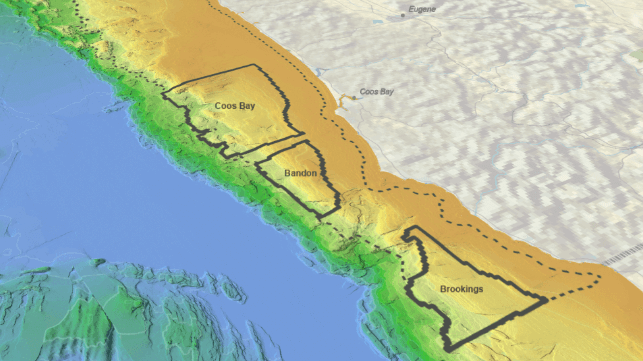BOEM Sets Date for Wind Auction Off Oregon

The Bureau of Ocean Energy Management has set a date for the first lease auction for offshore wind sites off the coast of Oregon. The inaugural sale will take place October 15, about one year before the state of Oregon completes its own road map for offshore wind development.
The areas available are off the coast of Coos Bay and Brookings, and taken together they cover about 200,000 acres. BOEM will offer bidding credits for bidders who will train local labor and engage with tribes and fishermen.
“Since the start of the Biden-Harris administration, the Interior Department has worked diligently to support the undeniable enthusiasm for a clean energy transition that will help address the climate crisis and create good-paying, family-sustaining jobs in every corner of America,” said Secretary Deb Haaland. “The advancement of the first offshore wind sale in Oregon marks years of engagement with state partners, Tribes, ocean users and industry, and the Administration’s commitment to building a thriving and sustainable clean energy industry.”
The lease process is locally controversial, and is opposed by regional tribes and fishermen. Earlier this month, commissioners in both affected Oregon counties prepared a ballot measure to ask residents whether they oppose offshore wind. The referenda will provide a nonbinding measurement of local sentiment, though it will not affect the lease process directly.
Qualified bidders include Spanish developer Avangrid (Iberdrola), Spanish floating-wind specialist BlueFloat Energy, the EDP/Engie joint venture Ocean Winds, and Aker-owned Mainstream Renewable Power. Once a lease is secured, it is no guarantee of future development: the construction plan will need to undergo an environmental review, and the developer will need to secure financing and components in an uncertain marketplace. The sites off Oregon will require floating wind foundations, which have higher capital costs than the bottom-fixed wind developments on the U.S. East Coast.
